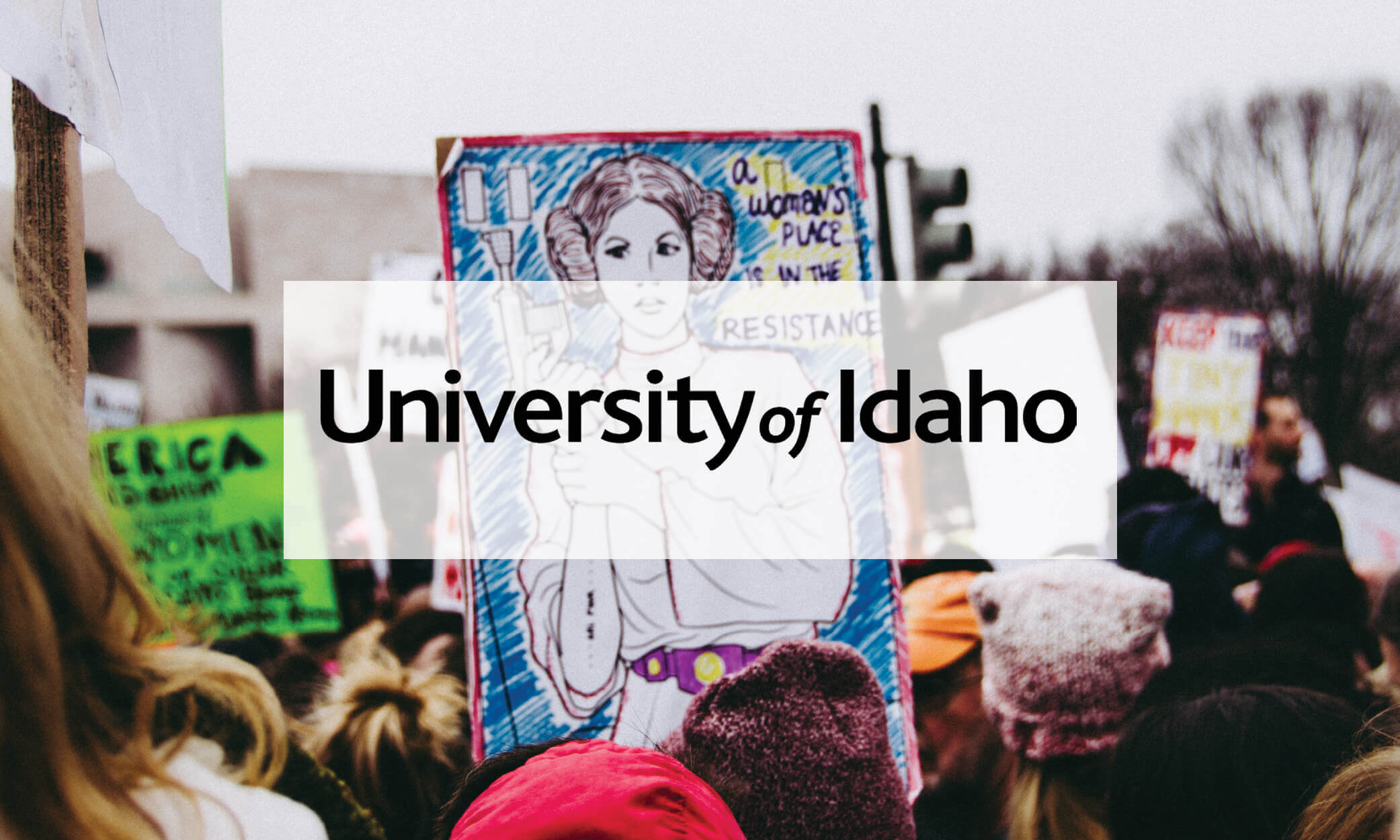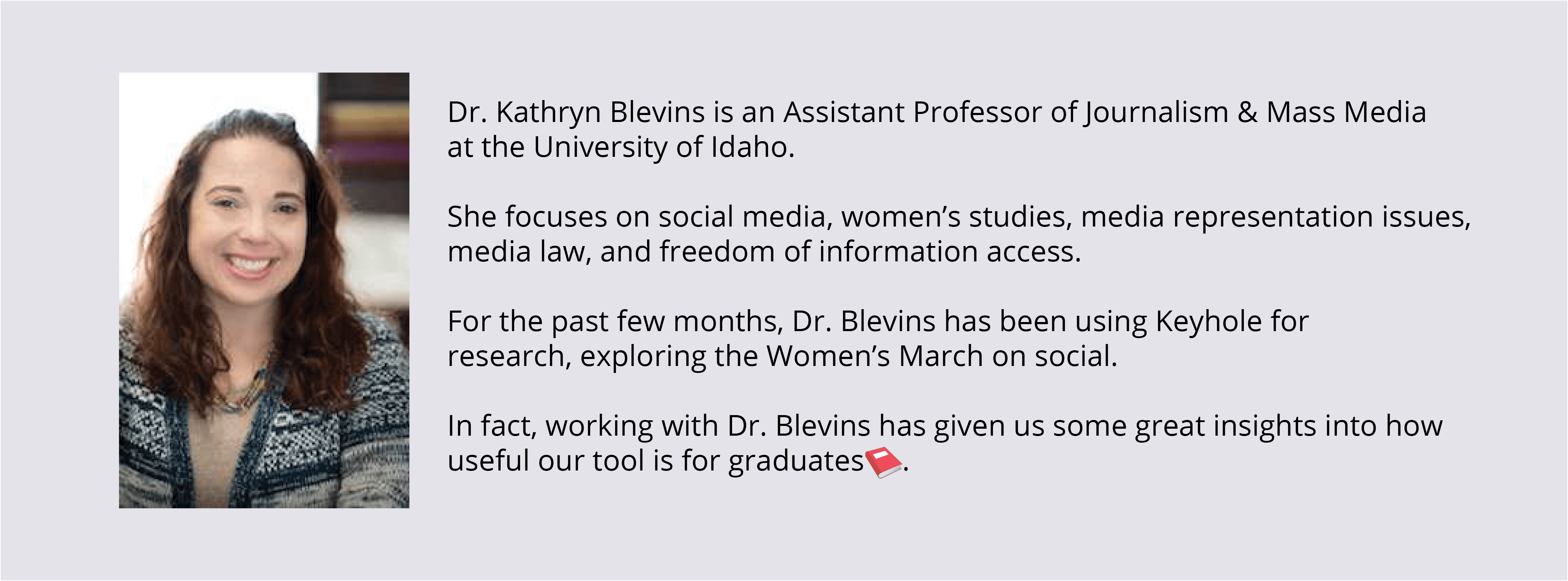
Now let me tell you about Dr. Blevins’s research.
We all remember the Women’s March of 2017. It was one of the largest demonstrations in US history, with millions of people marching in the US alone, and hundreds of other marches happening around the world.
It quickly became a source of interest for many. How did a movement with no defined goal or governing body make such an impact, mobilizing millions? This is what Dr. Blevins sets out to answer in her paper “The Women’s Convention: Reclaiming a Movement”.
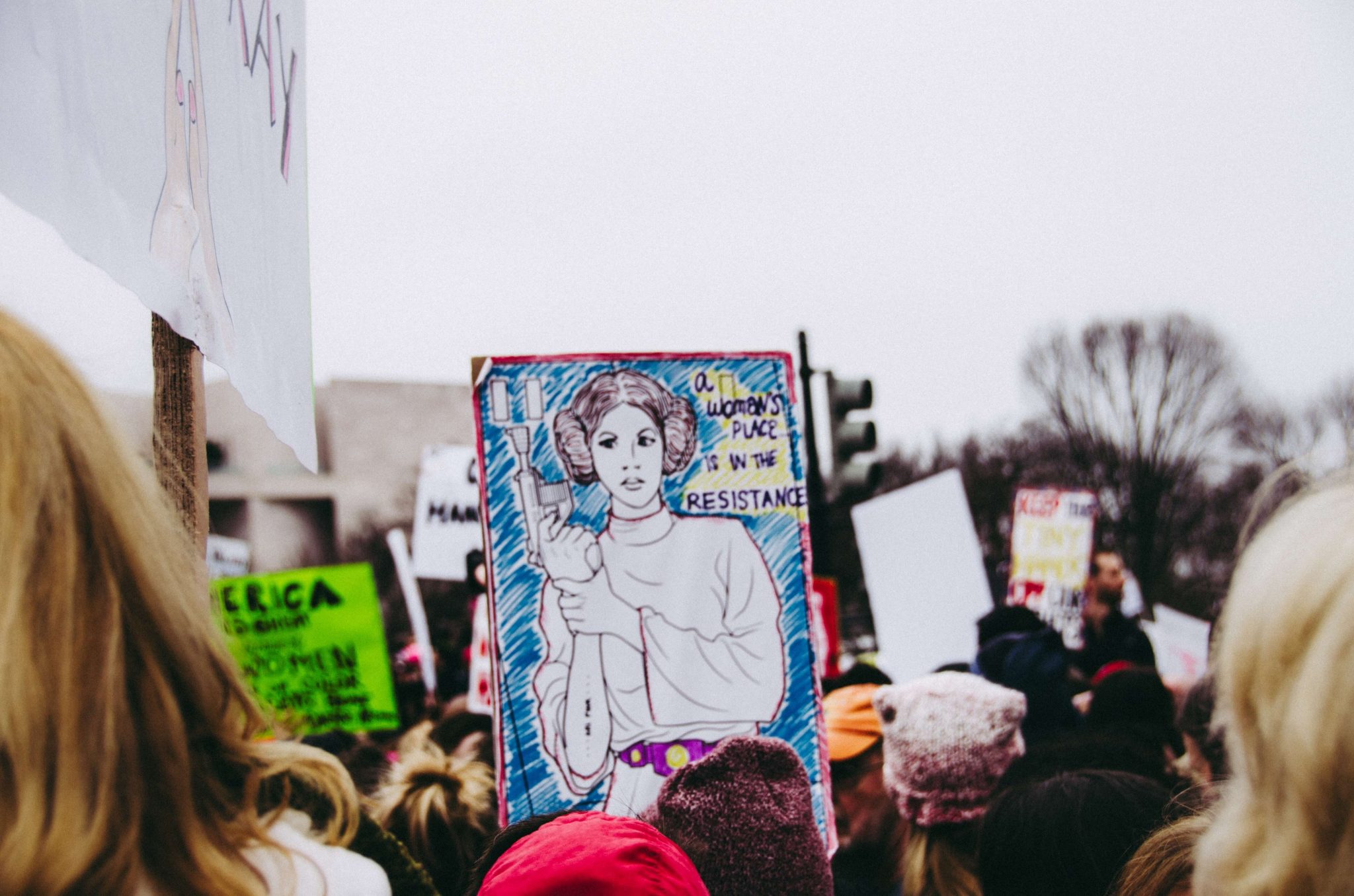
In it, she explores how the Women’s March movement was able to gather much-needed resources through social media, ultimately allowing it to scale to the Women’s Convention of 2017.
Using Keyhole, Dr. Blevins analyzed the posts being made by the Women’s March Facebook page, noting what posts were being shared with the intention of gathering resources for the convention.
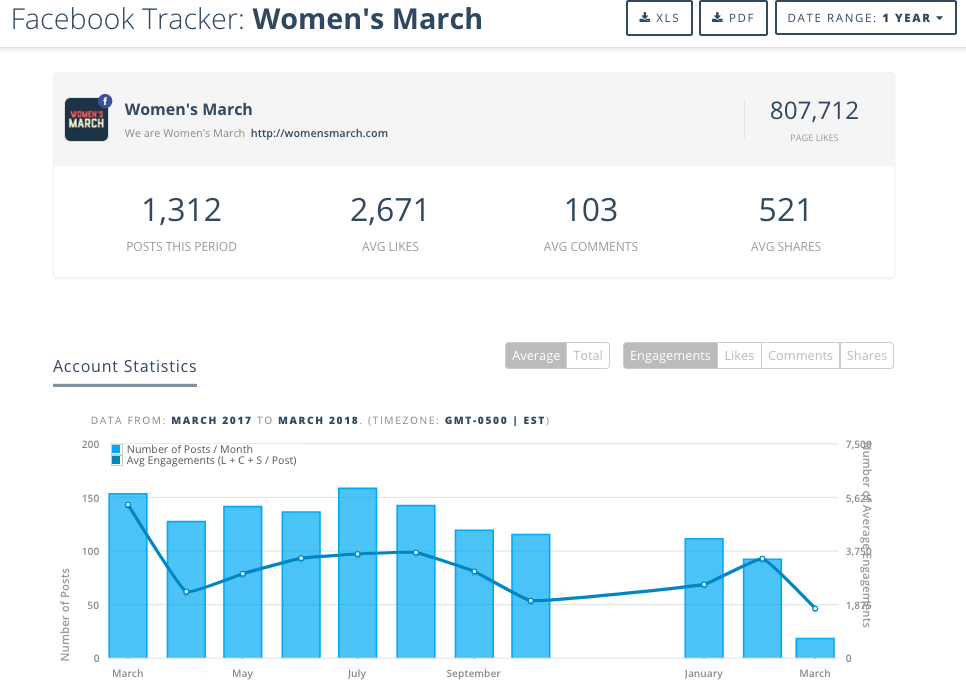
She also tracked the overall impact of #WomensConvention on Twitter and Instagram, analyzing overall reach and impressions.
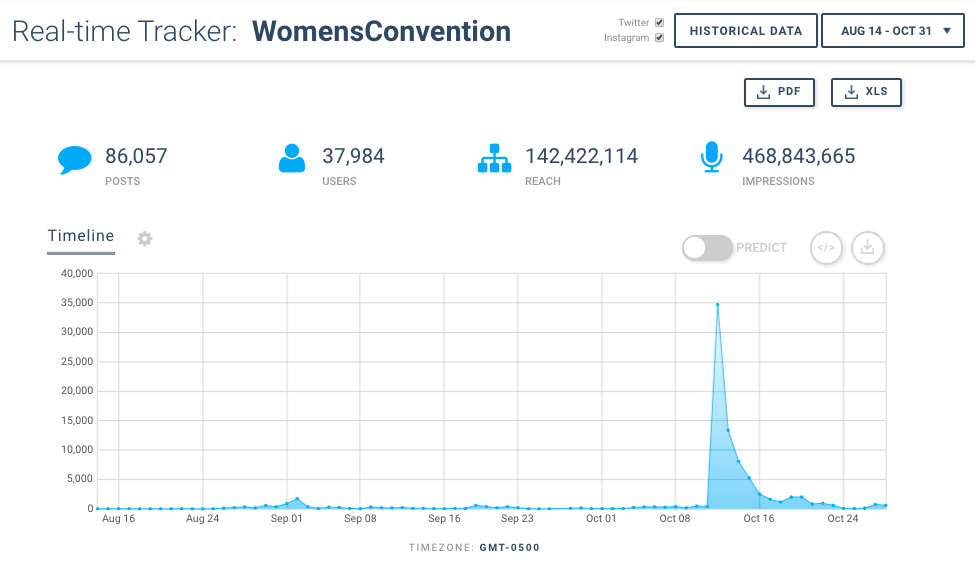
As she shares within her paper:
“During the same two month spread that this paper focused on for official posts from the Women’s March Facebook page, there were 85,867 posts tagged with the #WomensConvention hashtag. Those user posts had a reach of 142 million unique users, and made over 456 million impressions.
Those metrics are almost impossible to manage using traditional media tactics, especially for decentralized, activist organizations and movements.” (Blevins, “The Women’s Convention: Reclaiming a Movement”)
She shares with us that many researchers are not yet using tools like Keyhole to gather data in this way, but this is a change we will likely start to see in the future.
“A lot of social media researchers gather data manually. Mostly because most of us come from a social science background and we’re not used to being able to use a lot of software. This idea of being able to gather live info on a huge scale is something we are not used to.”
For Dr. Blevins, however, using Keyhole has proven to exponentially increase the amount of data gathered. She also shared with us that our historical offering was particularly useful, especially “at a price point that an academic can afford” (historical offering= gathering old posts that were shared on social).
“The ability to gather data like that is something I’ve never seen before. Being able to actually see that data with discourse and seeing attitude [Sentiment] is really unique. I really appreciate that as a researcher. From a couple of months of using Keyhole I have enough research and raw data that I could get sufficient publications written to get tenure.”
Overall, working with Dr. Blevins has helped us understand how Keyhole can be successfully applied as a research tool, an exciting use that we can’t wait to see more of.
As Dr Blevins shares,
“While this software is usually used by advertisers as part of their in-depth social-media analytics, it holds valuable insights for social media research as well” (Blevins, “The Women’s Convention: Reclaiming a Movement”).
